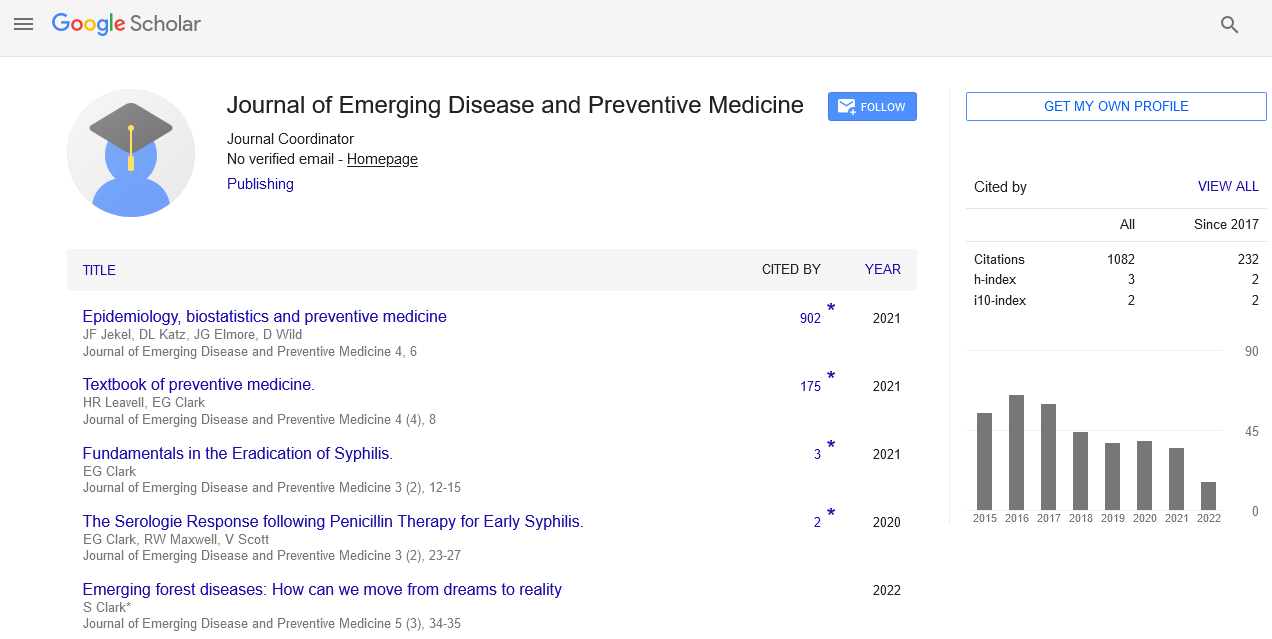An Overview on Pathology of Atherosclerosis
Received: 04-Dec-2021 Accepted Date: Dec 18, 2021; Published: 25-Dec-2021
This open-access article is distributed under the terms of the Creative Commons Attribution Non-Commercial License (CC BY-NC) (http://creativecommons.org/licenses/by-nc/4.0/), which permits reuse, distribution and reproduction of the article, provided that the original work is properly cited and the reuse is restricted to noncommercial purposes. For commercial reuse, contact reprints@pulsus.com
Introduction
Atherosclerosis is a tightening and thinning of your arteries caused by the cholesterol plaque around the artery over time. It can put blood pressure at risk as your arteries close. You may hear it called arteriosclerosis or atherosclerotic heart disease. It is a common cause of heart attack, stroke, and cardiovascular disease - this together is called cardiovascular disease. Signs and symbols of Atherossteosis has no symptoms for decades because the arteries widen in all areas of the plaque, so there is no effect on blood flow. Signs and symptoms occur only after a significant decrease or closure disrupts blood flow to different organs enough to cause symptoms. Most of the time, patients realize they only have this disease when they get other heart diseases like stroke or heart disease. These symptoms, however, still vary depending on which vein or organ is affected.The abnormality associated with atherosclerosis begins in childhood. Fibrous and gelatinous lesions have been detected in the coronary arteries of children aged 6-10 years. fatty streaks have been observed in the coronary arteries of children aged 11-15 years, although they appear very young inside the aorta.
Clinically, in terms of decades of arterial dilatation, symptomatic coronary artery disease is most commonly associated with men in their 40’s and women in their 50’s and 60’s. Sub-clinically, the disease first appears in infancy and is rarely present at birth. Significant symptoms may begin to develop during adolescence. Although symptoms are rarely seen in children, early testing of children for cardiovascular disease may benefit both the child and his or her relatives. [19] Although coronary artery disease is more common in men than women, atherosclerosis of the cerebral artery and stroke are equally affecting both sexes.
Marked narrowing of the arteries, which is responsible for bringing oxygenated blood to the heart, can produce symptoms such as angina pneumonia and shortness of breath, sweating, nausea, dizziness or lightheadedness, shortness of breath or heart palpitations. Abnormal heart rhythms called arrhythmias — a heartbeat that is slow or very fast — are another consequence of ischemia. Carotid arteries carry blood to the brain and neck. Significant narrowing of the carotid arteries may indicate symptoms such as: a feeling of weakness; inability to think clearly; difficulty speaking; dizziness; difficulty walking or standing upright; blurred vision; numbness in the face, arms and legs; headache; and loss of consciousness. These symptoms are also related to stroke (brain cell death). Stroke is caused by narrowing or narrowing of the arteries to the brain; Lack of adequate blood supply leads to the death of the affected tissue cells.
The lateral arteries, which supply blood to the legs, arms, and pelvis, also experience a noticeable decrease due to the cracking of the hard shell and clots. Symptoms of weight loss are numbness in the arms or legs, as well as pain. Another important area of plaque formation is the kidney vessels, which carry blood to the kidneys. The formation of plaque and congestion leads to a decrease in renal blood flow and chronic kidney disease, which, as in all other areas, usually has no symptoms until the end.
According to 2004 United States data, about 66% of men and 47% of women, the first sign of atherosclerotic cardiovascular disease is a heart attack or sudden death (within one hour of the onset of symptoms). Cardiopulmonary resuscitation tests, which are usually the most common diagnostic tests for blood flow, usually, only detect en75% lumen reduction or more, although some doctors say that nuclear stress may be as low as 50%. The case study included the autopsy of US soldiers killed in World War II and the Korean War. The most quoted report touches on the autopsy of 300 U.S. soldiers killed in Korea. Although the average age of men was 22.1 years, 77.3 percent had “more evidence of coronary arteriosclerosis.” Other military studies conducted in the Vietnam War showed similar results, though generally worse than in previous wars.





